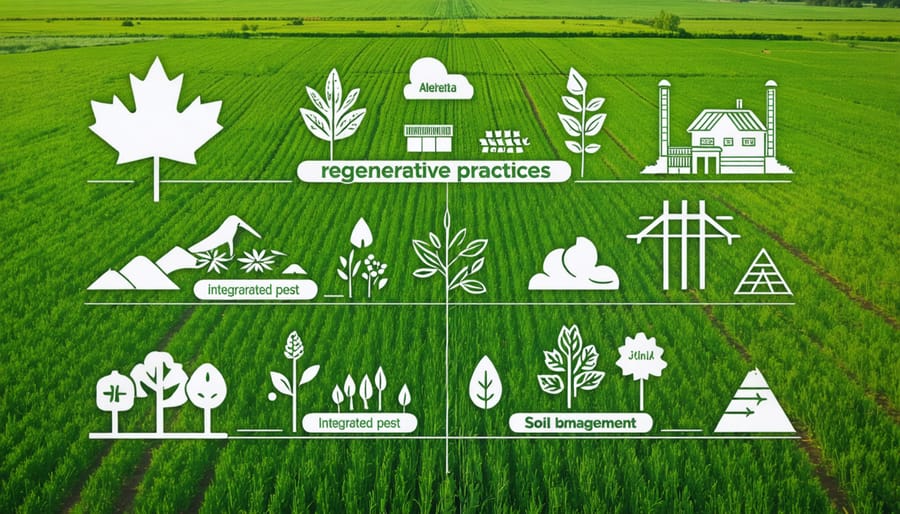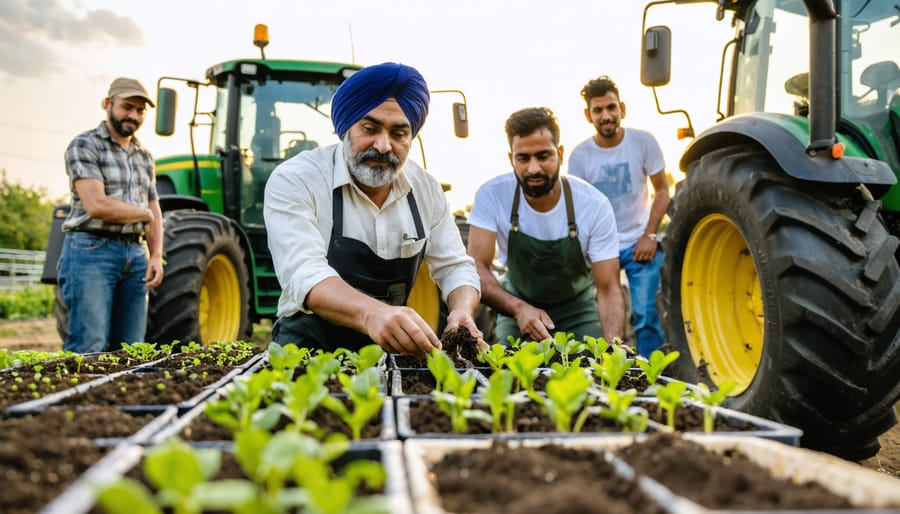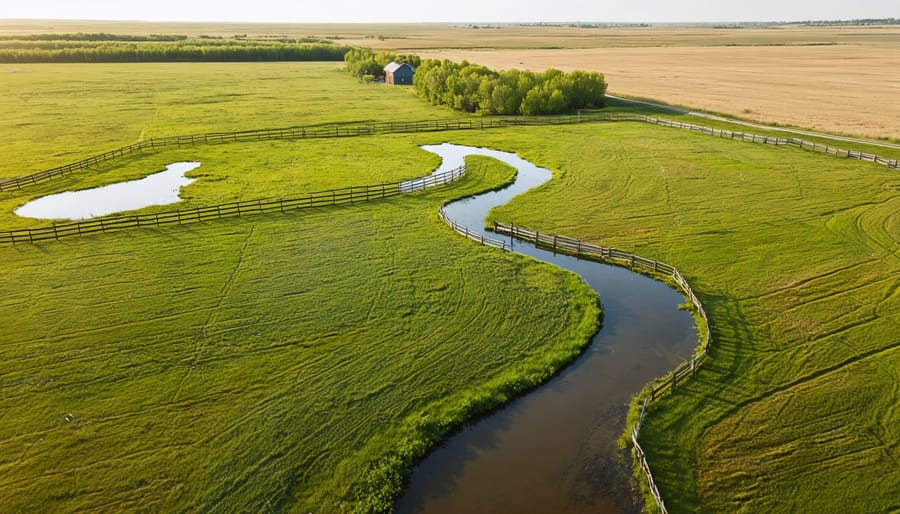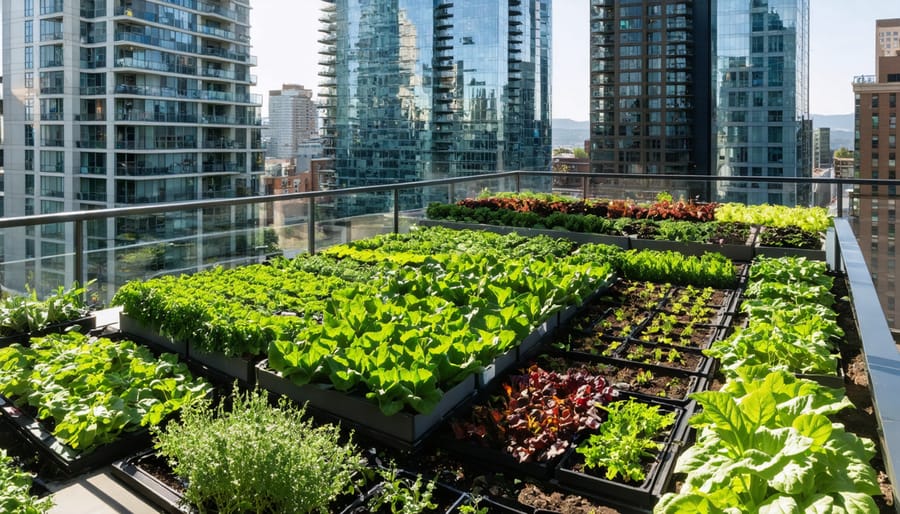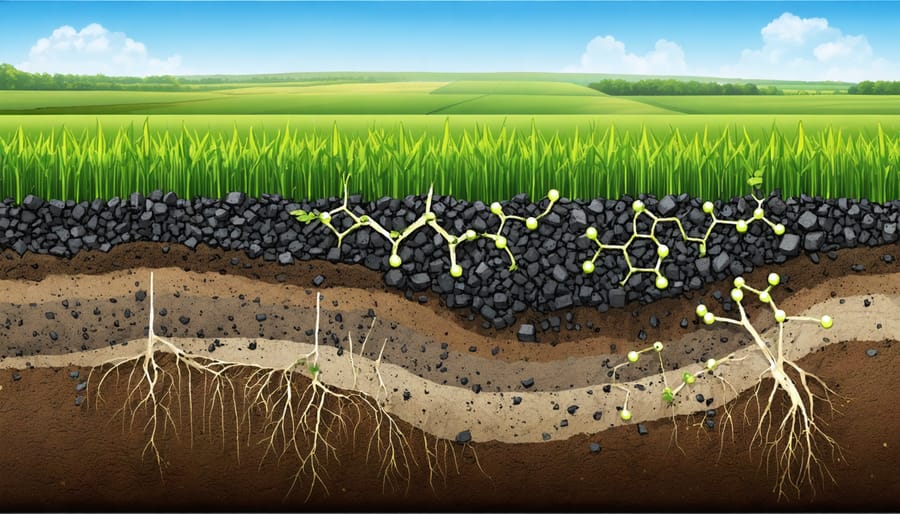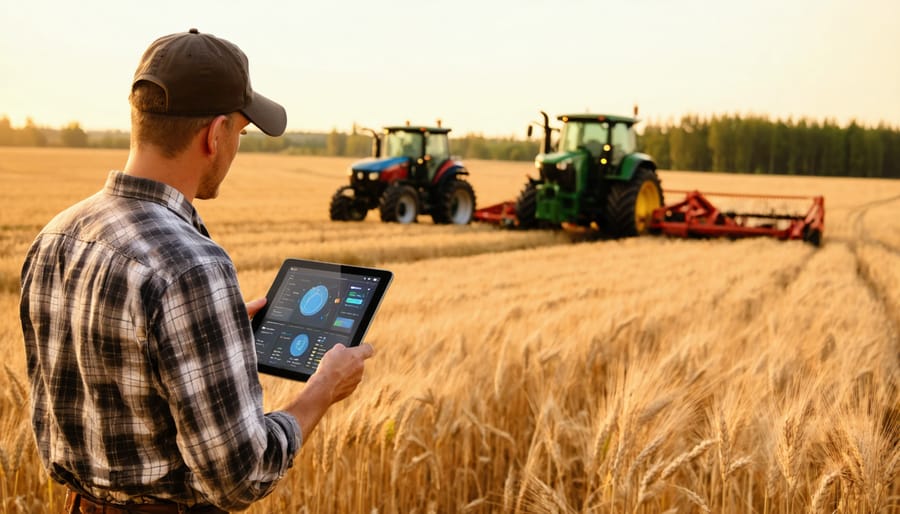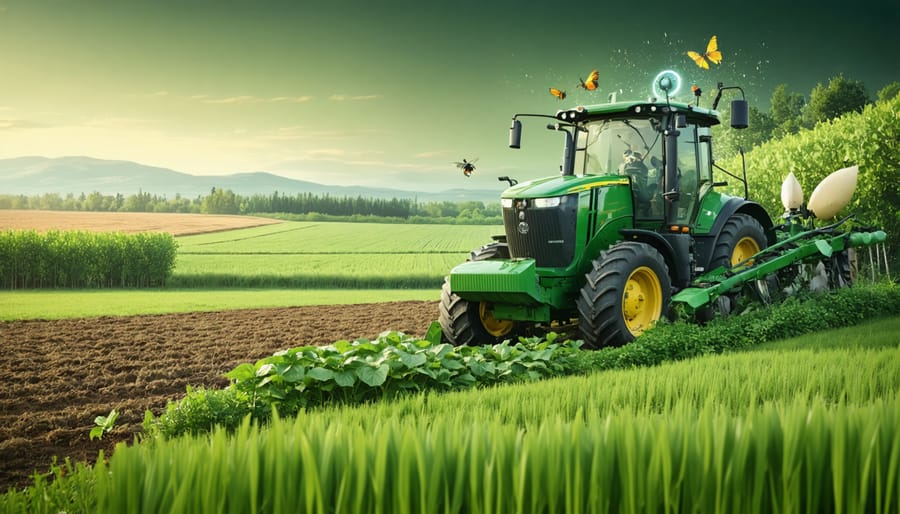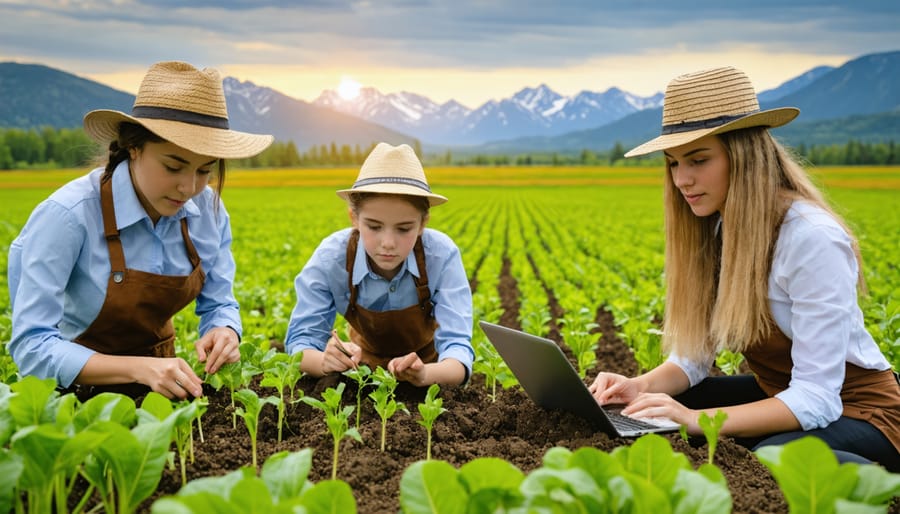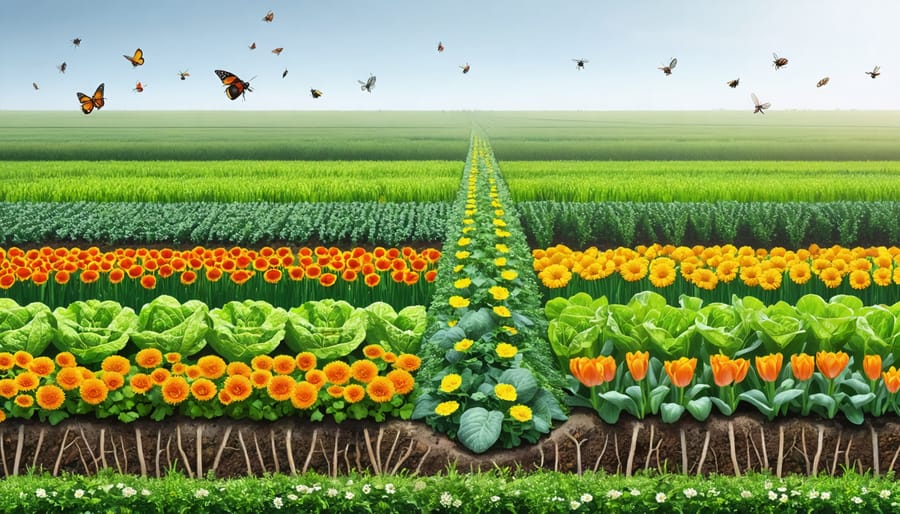Master sustainable agriculture terminology through targeted review games for the classroom and hands-on field exercises. Integrate new vocabulary into daily farm operations by pairing technical terms with practical applications, creating lasting connections between theory and practice. Build confidence in sustainable farming discussions by practicing key phrases like “regenerative practices,” “integrated pest management,” and “soil biodiversity” within real-world contexts that matter to Canadian producers. Document field observations using industry-standard terminology, strengthening both agricultural knowledge and professional communication skills while preparing for certification requirements and collaborative projects with fellow farmers.
This focused approach serves both working professionals seeking to enhance their expertise and students preparing for agricultural certifications, grounding abstract concepts in the concrete realities of Canadian farming operations.
Core Sustainable Agriculture Terms You Need to Know
Soil Health and Conservation Terms
Understanding key soil health and conservation practices starts with mastering essential terminology. Common terms include tilth, which refers to soil’s physical condition for plant growth, and aggregate stability – the ability of soil particles to resist breaking down. Organic matter content describes decomposed plant and animal materials that enhance soil structure.
Cover cropping involves growing specific plants to protect and improve soil during off-seasons, while no-till farming maintains soil structure by minimizing disturbance. Soil compaction occurs when excessive pressure reduces pore space, while infiltration rate measures how quickly water enters the soil.
Other vital terms include soil biodiversity, referring to living organisms within the soil ecosystem; nutrient cycling, the natural process of converting organic matter into plant-available nutrients; and erosion control, methods to prevent soil loss from wind and water. Understanding these terms helps Alberta farmers implement effective soil management strategies and communicate with agricultural professionals about conservation goals.

Water Management Terminology
Understanding water management terminology is crucial for implementing effective water conservation techniques on Canadian farms. Key terms include deficit irrigation, which refers to deliberately applying less water than crops typically need during drought-resistant growth stages. Drip irrigation describes the precise delivery of water directly to plant roots through a network of tubes and emitters. Soil moisture sensors help farmers monitor water levels at various depths, while evapotranspiration rate measures water loss through both soil evaporation and plant transpiration.
Watershed protection involves terms like riparian buffer zones – vegetated areas along waterways that filter runoff and prevent erosion. Water-use efficiency (WUE) calculates crop yield per unit of water used, typically measured in kilograms per millimetre. In the Prairie provinces, dugouts are essential water storage structures that collect snowmelt and rainfall. Understanding these terms helps farmers optimize their irrigation scheduling, reduce water waste, and maintain sustainable water management practices throughout the growing season.
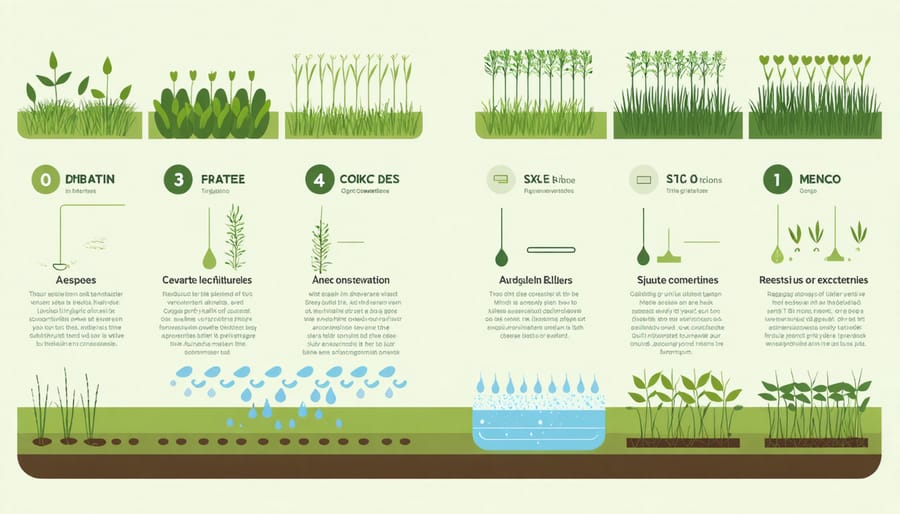
Environmental Impact Vocabulary
Carbon Footprint and Climate Terms
Understanding carbon-related terminology is crucial for implementing climate-smart practices in modern farming. Key terms include carbon sequestration, which refers to capturing and storing atmospheric carbon dioxide in soil through improved farming methods. Carbon credits allow farmers to earn income by implementing practices that reduce greenhouse gas emissions.
Soil organic carbon (SOC) measures the carbon stored in soil organic matter, while carbon intensity describes the total greenhouse gas emissions per unit of agricultural output. Carbon cycling refers to the natural exchange of carbon between soil, plants, and atmosphere.
Alberta farmers are increasingly familiar with terms like carbon sinks (natural systems that absorb more carbon than they release) and carbon neutral farming (achieving net-zero emissions through balanced practices). Additional important vocabulary includes greenhouse gas inventory, emission factors, and carbon offset protocols.
These terms are essential for participating in carbon markets, accessing climate-focused funding programs, and documenting environmental stewardship efforts in farm management plans.
Biodiversity and Ecosystem Terms
Understanding biodiversity and ecosystem terms is crucial for sustainable farming practices in Alberta’s diverse landscapes. Key terms include beneficial insects, which are natural predators that help control pest populations without chemical interventions. Pollinators, especially native bee species and other beneficial insects, play a vital role in crop production across the prairies.
Ecosystem services describe the benefits that natural systems provide to agriculture, such as soil formation, water filtration, and natural pest control. Biological corridors are important features that connect different habitats, allowing wildlife to move safely between areas while supporting farm biodiversity.
Plant diversity refers to the variety of species within a farming system, including cover crops, companion plants, and native vegetation. Riparian zones – the areas along waterways – serve as critical habitat for wildlife while protecting water quality on farmland.
Farmers across Alberta are increasingly recognizing the value of habitat conservation, creating spaces for beneficial species through hedgerows, shelterbelts, and natural areas. These features not only support wildlife but also contribute to better crop yields and more resilient farming systems.
Practice Exercises and Real-World Applications
Sample Test Questions
Test your knowledge with these practice questions that reflect common vocabulary assessments in sustainable agriculture:
1. Choose the correct definition for “cover cropping”:
a) Using plastic sheets to protect crops
b) Growing specific plants to maintain soil health
c) Harvesting multiple crops simultaneously
d) Applying chemical fertilizers seasonally
2. Complete the sentence: “The process of ________ involves using beneficial insects to control pest populations.”
a) Crop rotation
b) Biological control
c) Companion planting
d) Vertical farming
3. Match the term with its definition:
– Agroforestry
– Permaculture
– Biodynamics
– No-till farming
With:
1. Agricultural system that integrates trees with crops
2. Permanent agriculture focusing on sustainable design
3. Holistic farming approach following lunar cycles
4. Minimal soil disturbance cultivation method
4. True or False:
“Regenerative agriculture practices always require more water than conventional farming methods.”
5. Multiple Choice:
Which sustainable practice helps reduce greenhouse gas emissions?
a) Precision agriculture
b) Intensive tilling
c) Continuous cropping
d) Heavy irrigation
Remember to consider the Canadian context when answering these questions, particularly how these practices apply to Alberta’s unique growing conditions and climate challenges.
Answers provided separately to encourage active learning and self-assessment.
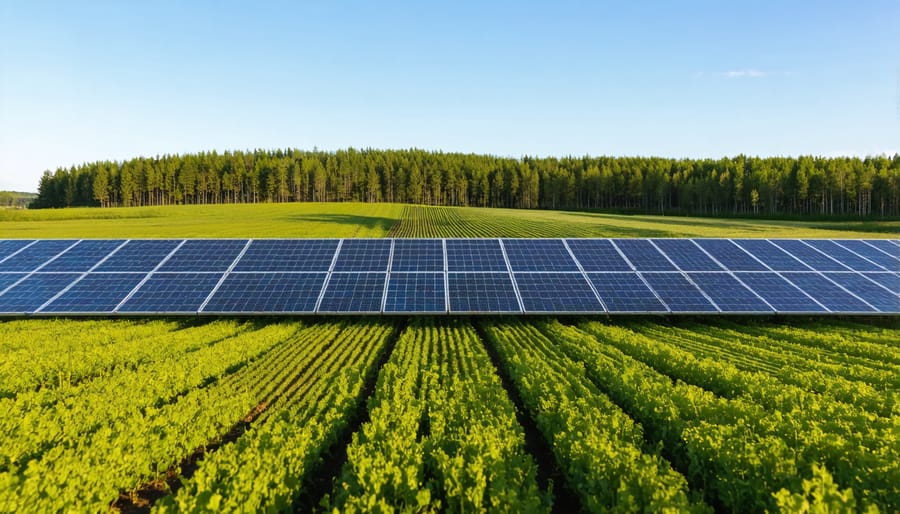
Alberta Farm Case Studies
The Henderson Family Farm in Lacombe showcases excellent implementation of sustainable agriculture vocabulary in their daily operations. Sarah Henderson, a third-generation farmer, regularly uses terms like “crop rotation,” “soil biodiversity,” and “integrated pest management” when training new staff and documenting their regenerative practices. Their detailed field logs demonstrate proper usage of technical terminology while maintaining clear communication with workers.
In Lethbridge, the Prairie Wind Collective provides another stellar example. Their team meetings incorporate sustainable agriculture vocabulary naturally, using terms like “cover cropping,” “no-till farming,” and “biological pest control” in their daily discussions. Farm manager David Chen emphasizes how mastering these terms has improved their grant applications and communications with agricultural extension officers.
The Mountain View Organic Farm near Red Deer demonstrates effective bilingual usage of sustainable agriculture terminology. Owner Marie Dubois maintains documentation in both English and French, helping international workers better understand concepts like “companion planting,” “buffer zones,” and “ecological corridors.” Their success in organic certification applications highlights the importance of precise vocabulary usage in regulatory compliance.
These farms show how proper terminology enhances professional communication, documentation, and regulatory compliance while fostering better understanding among team members. Their experiences prove that integrating sustainable agriculture vocabulary into daily operations supports both practical farming and professional development.
Study Tips and Memory Techniques
Learning agricultural terminology becomes easier when you connect new words to your daily farming practices. Start by creating flashcards with sustainable farming terms on one side and their practical applications on the other. For example, pair “cover cropping” with your experience using clover between growing seasons.
Visual learners can benefit from sketching simple diagrams or mind maps that connect related concepts. Try grouping terms by categories like soil health, water conservation, or integrated pest management. This helps build a natural framework for remembering terminology in context.
Consider forming a study group with neighbouring farmers. Meeting regularly to discuss sustainable practices using proper terminology reinforces learning and provides real-world context. You might take turns explaining concepts using the new vocabulary, sharing how you’ve implemented these practices on your own land.
Use the “teach-back” method by explaining sustainable agriculture concepts to others using proper terminology. This technique is particularly effective when sharing knowledge with farm hands or family members involved in your operation.
Create memorable associations by connecting terms to specific locations on your farm. For instance, associate “riparian buffer zones” with that stretch along your creek where you’ve planted native species.
Finally, make learning active by incorporating new terms into your daily farm planning and record-keeping. Writing weekly notes using proper terminology helps cement these words into your working vocabulary while serving a practical purpose.
Mastering sustainable agriculture vocabulary is an ongoing journey that strengthens both your professional capabilities and your connection to Canada’s agricultural community. As we’ve explored throughout this guide, building your terminology knowledge opens doors to better communication with fellow farmers, improved access to resources, and more effective implementation of sustainable practices on your land.
Remember to practice new terms regularly in your daily operations, whether you’re discussing soil health with neighbours or reviewing certification requirements. Keep a digital or physical notebook handy to jot down unfamiliar words you encounter during field days or agricultural workshops. Consider joining local farming associations in Alberta, where you can practice using sustainable agriculture terminology in real-world contexts.
Take advantage of online resources, industry publications, and extension services to continue expanding your vocabulary. Share your knowledge with others in your farming community, as teaching is one of the best ways to reinforce learning. By staying committed to vocabulary development, you’re not just improving your language skills – you’re contributing to the broader movement toward sustainable agriculture in Canada.
Start small, stay consistent, and watch your confidence grow alongside your sustainable farming expertise.

